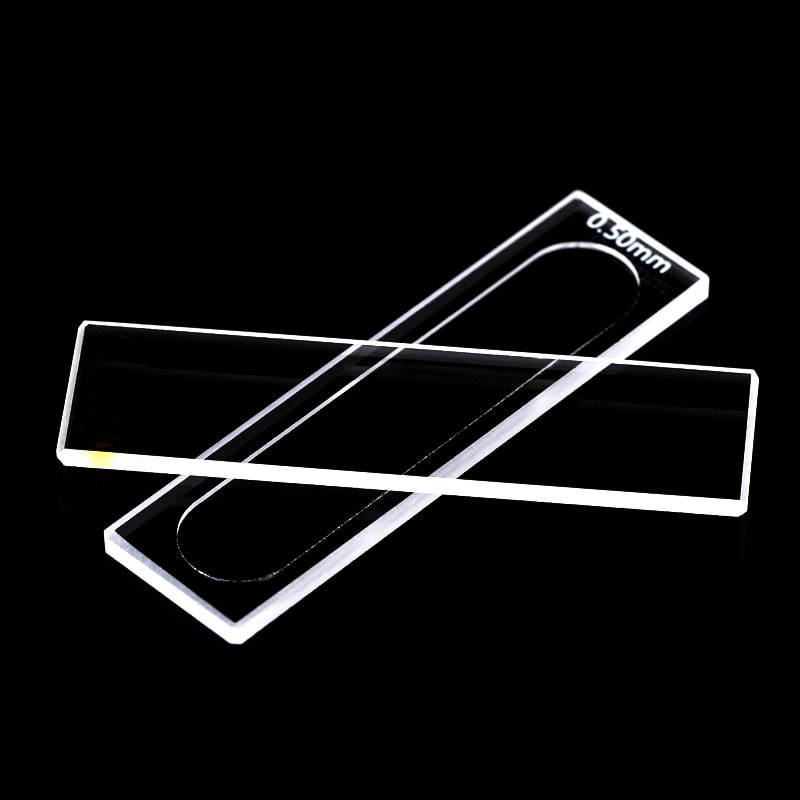Spectrophotometry, which uncovers the secrets behind light transmittance and absorption at specific wavelengths, is an essential method of scientific discovery. Cuvettes are the vessel at the center, which is used to store samples for analysis. Cuvettes are small container that appears simple, yet its features and dimensions, such as the length of the route and the choice of materials, are essential to obtain accurate information about concentration and purity. Let’s get into this fascinating world where dimensions and size of cuvettes determine the results of each experiment.
The Power of Cuvette Path Length
Imagine the beam of light passing through a fluid sample. What happens is heavily dependent on the length of the cuvette or the distance at which the light travels. A lot of labs employ a standard cuvette with one centimeter of path. This is the best combination of practicality and sensitivity. Why is this important? The longer the distance extended, the greater amount of light is absorbed. This increases the signal in the dilute samples. For concentrated solutions such as nucleic or protein acids, a shorter route length could change the rules. This reduces the amount of dilution needed to preserve precious samples, as well as reduces the time needed to prepare. What’s the main takeaway from this? It is an art to match the length of the path to sample needs. This can improve accuracy.

Image credit: cuvet.co
Cuvette Dimensions and Size: More Than Meets the Eye
The cuvette’s size doesn’t only concern how much liquid fits inside it’s about how the vessel works with the spectrophotometer. Each container is made to perform an exact task and comes in a variety of shapes and sizes. Semi-micro cuvettes are smaller in size, but thicker walls. They are suitable for small sample volumes. The thicker walls reduce the area inside that allows light to pass without wasting any drops. This is an enormous improvement over the standard cuvette. It takes the least amount of steps to pipette. It also is less susceptible to errors and gives results that are solid. This is an innovative tweak that shows size isn’t just an amount of numbers, it’s also a factor of strategic importance.
The 1 cm path length Cuvette is a laboratory favorite
Why does the 1 cm path length cuvette reign supreme in so many experiments? It’s the ideal size for biological studies, where there are a lot of samples and every milliliter is important. This traditional design gives consistent reads of absorbance while not overloading the detector. It’s ideal for all kinds of tests, from DNA purity tests to enzyme assays. It’s not a panacea for all situations. There’s no one size fits all hero. Selecting the right instrument is important, and not only using the one you are familiar with. A mis-matched cuvette can be compared to a mis-tuned instrument close, but not exactly perfect.
Material Matters Beyond Path and Size
Cuvette dimensions only tell a portion of the story. The choice of material will seal the deal. Glass and quartz cuvettes are notable for their high transmission rates, letting light zip through with minimal interference. Cuvettes made of glass are tough they can be reused and are ideal for spectroscopy. Plastic cuvettes are affordable and easy to use. They don’t require cleaning, there’s no cross-contamination, just use and toss. They are ideal for testing in aqueous fluids or speedy DNA/RNA tests. What’s the price to pay? The trade-off? This is a classic example of objectively dictating the preference for quartz for the purist, plastic for the pragmatist.
Precision in Practice
The variety of cuvettes is what makes them so attractive. Combining spacers with shorter lengths of path allows the handling of concentrated samples and larger vessels are able to manage large volumes. Any choice in length, size and material ripples through the experiment making clear the outcomes. Think about a lab that measures one of the most rare proteins: Semi-micro cuvettes with a short path skips dilution headaches, delivering trustworthy information quickly. Contrast that with a sloppy exchange of cuvettes in mid-experiment and the numbers falter. The smallest of details can have the greatest impact in spectrophotometry.
Cuvettes are small but they play a big role. Cuvettes come in a range of sizes starting from the cuvette with a length of 1 cm to custom-made. They bridge the gap that exists between sample and insight. The right cuvette could transform the quality of a measurement, whether you’re looking for purity or concentration to a high-quality measurement.
